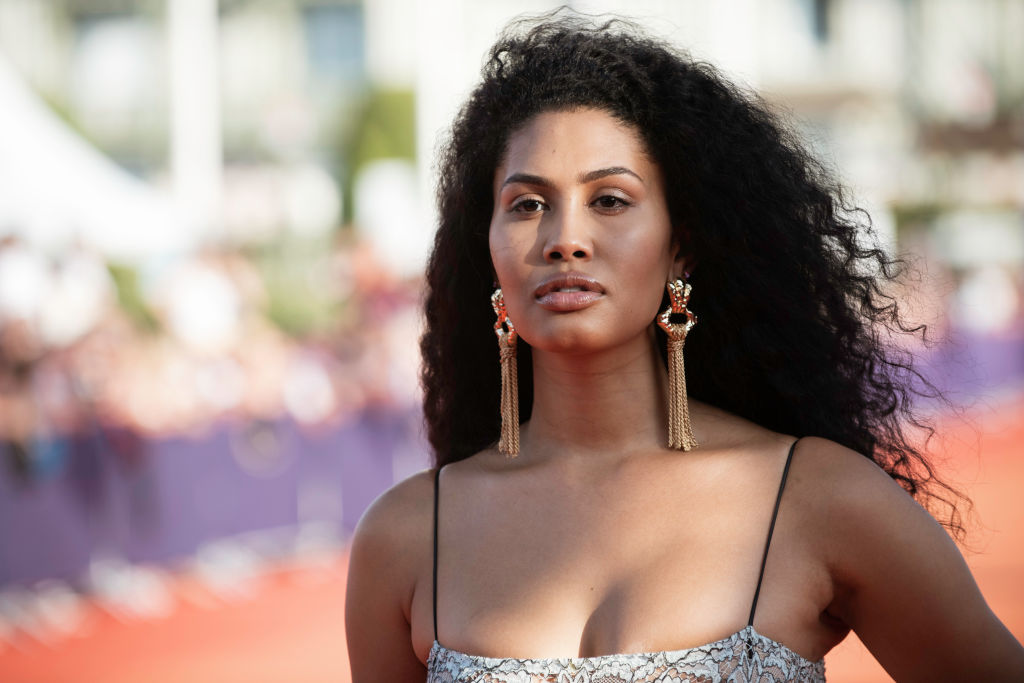
There are two words Leyna Bloom uses to describe ballroom culture: “walking magic.” “It’s a source of being, it’s the blueprint of a lot of courage in the world,” says the actor, dancer and model.
Viewers get a glimpse of that magic in Bloom’s film Port Authority, which premiered at Cannes in 2019 and arrives on demand and digital on June 1 following a limited theatrical release. With the film’s selection for the world’s most prestigious international film festival, Bloom became the first openly trans woman of color to lead a feature-length movie at a major festival. Next month, she’ll be pioneering another first, becoming the first Black and first Asian openly trans woman in the pages of the annual Sports Illustrated Swimsuit Issue. For Bloom, who has long campaigned for greater inclusivity in the fashion industry, it’s a euphoric moment. “We’re living in a new world right now,” she says. “I’m just glad to be born at this time so I could really be the first one to do things, so the next generation can have the resources, information or inspiration to do what they need to do.”
Port Authority centers on the blossoming relationship between Paul (Dunkirk’s Fionn Whitehead), who has recently left home in Pennsylvania for New York City, and Wye, played by Bloom, a young trans woman who is part of the city’s ballroom scene. Writer-director Danielle Lessovitz, who is white and queer, told IndieWire last year about her goal of acknowledging the privilege of herself and audiences, while “[entering] the space in a loving respectful way, to honor the cultural contributions of this community.”
Bloom was drawn to the story for its many parallels with her own life: when she was 17, she moved from Chicago to New York City, taking a Greyhound bus and arriving at the city’s notoriously dingy Port Authority Bus Terminal. From a young age, Bloom aspired to turn her passion for dancing into a career; she had scored a prestigious scholarship to the Chicago Academy for the Arts. But the institution refused to recognize her gender as a woman, and Bloom decided to pursue her dreams in New York instead. It was there that, between waiting tables and searching for a more permanent home, she began to carve out a career as a model, and in 2017, became the first openly trans woman of color to feature in Vogue India.
She also became a renowned member of the ballroom community, known for walking in the category of “face,” one of several categories where contestants are judged based on certain skills or techniques. Bloom felt a sense of responsibility to represent the culture authentically in Port Authority. “It’s a place where I found refuge, where so many people can find inspiration, can find who we are, in this world that has rejected us.”
Ballroom culture, which traces its origins to the Harlem Renaissance, is both a social movement and an art form, pioneered by Black, brown and Latinx transgender and gender nonconforming folks who established LGBTQ networks in underground nightclubs, at a time when discrimination was pervasive in all aspects of life. The 1990 documentary Paris is Burning helped bring wider attention to what was then described as a subculture, and in recent years, depictions on the fictional FX television series Pose (Bloom is currently starring in its third and final season) and HBO Max’s reality competition Legendary have helped lead to its mainstream recognition.
For Bloom, that growing popularity is helping cement ballroom’s dominance and keeping those traditions alive. “Queer, brown, Black trans bodies may be at the bottom of the food chain in some aspects, but over the years, the world has really dived into our core of who we are,” she says. “I feel like the more people tap into ballroom and queer culture, they will see the essence of where it started, and know where it began.”

As well as sensitively approaching the themes of interracial relationships and the experience of being a trans woman of color, Port Authority leans into the concept of chosen families. In one scene, Paul asks Wye whether the other performers in her house are her real brothers. “Not in, like, the most traditional way,” she replies. That sense of uplifting and inspiring one another has meant a great deal to Bloom during her time in the ballroom community, as have her relationships with her biological family—among them dancers, entertainers and visual artists. She recounts watching the film recently with her father, and reflecting on her childhood, when her mother was deported to the Philippines, and she, her father and her older brother became homeless for some time. “To see us go from that to where I am right now is just really powerful for him. He always grounds me and says okay, this is amazing, what’s next?”
The next first for Bloom will come in July, with her appearance in the annual Sports Illustrated Swimsuit Issue. Participation in the shoot for the issue in Tampa was a profound moment, which came a couple of years on the heels of a viral campaign Bloom had launched in 2018, calling for Victoria’s Secret to include her as the first transgender woman of color to walk a runway show. (Bloom didn’t get the gig, and the following year, Victoria’s Secret hired Valentina Sampaio, an openly trans model from Brazil, for an ad campaign.) And even though things may have progressed slightly since then, Bloom feels there’s still a great deal of work to be done within the fashion industry and beyond to ensure inclusive values are consistent, and come from a genuine place. “I don’t want to be a trend. I want to be taken seriously,” she says. “I would like my child to be born in a world where when they wake up, and they walk outside, they look left, or they look right, and they see people from all different walks of life. I want representation to be fluid, universal and heartfelt.”
For Bloom’s future projects, “it’s always going to be purpose over popularity,” she says, referring to barrier-breaking “gladiators” that came before her including pioneering actor Dorothy Dandridge and model, activist and Paris is Burning subject Octavia St. Laurent. “When I leave, I want to leave something [behind], so people can live off of it forever. That’s what I was brought here to do: to be walking magic.”
More Must-Reads from TIME
- Cybersecurity Experts Are Sounding the Alarm on DOGE
- Meet the 2025 Women of the Year
- The Harsh Truth About Disability Inclusion
- Why Do More Young Adults Have Cancer?
- Colman Domingo Leads With Radical Love
- How to Get Better at Doing Things Alone
- Michelle Zauner Stares Down the Darkness
Contact us at letters@time.com